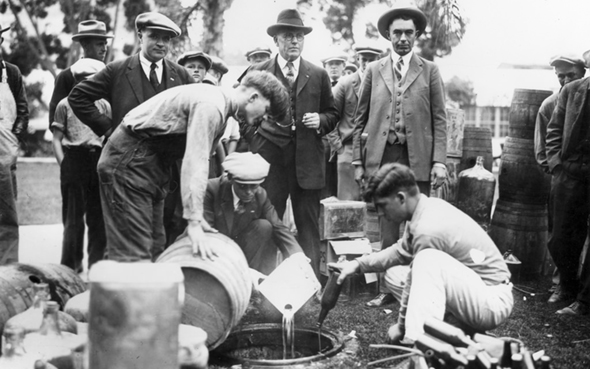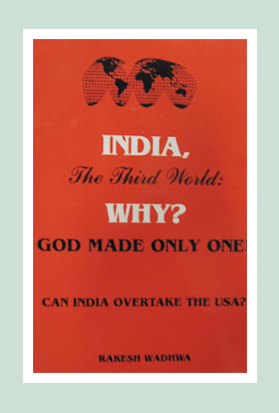Prohibition: Archaic Remedy That Failed (Part 3)

Read Part 1 and Part 2 of this series of articles.
Prohibition of alcohol has proved to be a failed experiment a hundred years ago in the US. The biggest case against prohibition is the 13-year ban enforced in the US. You must keep in mind that pre-prohibition crime rates in the US were less than 15% of the current state of affairs. The noble undertaking began in 1920 and lasted 13 years! In the time that ensued, an entire segment of the civilian population was criminalized and the greatest gift of prohibition to the world was born – organized crime. This is how it came to pass that overnight the alcohol industry became a gangster’s paradise.
End of quality assurance:
With so many bootleggers crawling out of the woods, there simply was no accountability. Demand creates supply and countless Indians still fall victim to drinking bad liquor with serious damage to their internal organs and even death. Similarly, in the US, prohibition forced people to fill the gap with whatever that came to hand. You know the list of ingredients that have been found in country hooch from the newspaper reports in India, everything from batteries to rat poison.
Golden Road to Gangsterhood:
Since they were already criminals in the eyes of the law, people decided to go the whole hog and break more laws. In a situation where they were willing to be hanged for the sheep as well as the lamb, the fights to control bigger chunks of the illegal supply of booze and gang wars became a commonplace event, drive-by shootings and even machine guns became standard equipment for these black sheep turned wolves.
Corruption of the Law:
Since people still wanted to drink, it was only possible by paying off the police. Once the police was on the take, soon the lawyers and judges followed. Those who were clean, had no other option but to join the crowd.
Creation of Victimless Crimes:
When there is no injured party or loss or damage to property and no threat of violence occurs, it falls into the category of victimless crime. What happens is that what was earlier private behavior becomes a victimless crime. History, again, is witness to the fact that centuries of attempts by governments to control private behavior have not resulted in any meaningful results.
Instead, what rises is a hydra-headed problem of wrongly utilized resources to prosecute victimless crimes. The rise of lawlessness that hurts no one takes up most of the attention of the law and legal machinery that courts are swamped with pending cases and most of the prosecution efforts are directed at lesser crimes.
The very gateway to prohibited substances offers a conduit for smuggling more horrific things. These days, the US has sat up and revisited their laws on marijuana prohibition in an honest admission that criminalizing it was opening a gateway through which harder drugs were being supplied. Off late, a more worrying concern is the evidence that this money goes to fund terrorism activities. The same smuggling routes can be used for something as inherently harmless as marijuana or something as lethal as guns and explosives for use in a terror attack.
You can read Part 4 of this series of articles here.
 Rakesh Wadhwa. Ever since, I was a school boy, I knew India was on the wrong path. Socialism was just not what we needed to get ahead. Government controlled our travel; government controlled our ability to buy and sell; and government controlled our freedom to move our money. My life has focused on the inherent rights people have. When I was in college, I never understood, what the governments meant by their "socialistic attitude". If people are free to buy, sell and move their capital themselves without any restrictions by state, then the welfare of people is inevitable & hence the countries they live in will become wealthy. The government has no right whatsoever, to point a finger at me or my business. I am not a revolutionary. I just want to light up my cigarette and not get nagged about it. I believe in non-interfering attitude to attain more.
Rakesh Wadhwa. Ever since, I was a school boy, I knew India was on the wrong path. Socialism was just not what we needed to get ahead. Government controlled our travel; government controlled our ability to buy and sell; and government controlled our freedom to move our money. My life has focused on the inherent rights people have. When I was in college, I never understood, what the governments meant by their "socialistic attitude". If people are free to buy, sell and move their capital themselves without any restrictions by state, then the welfare of people is inevitable & hence the countries they live in will become wealthy. The government has no right whatsoever, to point a finger at me or my business. I am not a revolutionary. I just want to light up my cigarette and not get nagged about it. I believe in non-interfering attitude to attain more. 
 The Bastiat Award is a journalism award, given annually by the International Policy Network, London. Bastiat Prize entries are judged on intellectual content, the persuasiveness of the language used and the type of publication in which they appear. Rakesh Wadhwa won the 3rd prize (a cash award of $1,000 and a candlestick), in 2006.
The Bastiat Award is a journalism award, given annually by the International Policy Network, London. Bastiat Prize entries are judged on intellectual content, the persuasiveness of the language used and the type of publication in which they appear. Rakesh Wadhwa won the 3rd prize (a cash award of $1,000 and a candlestick), in 2006.
What the readers are saying…